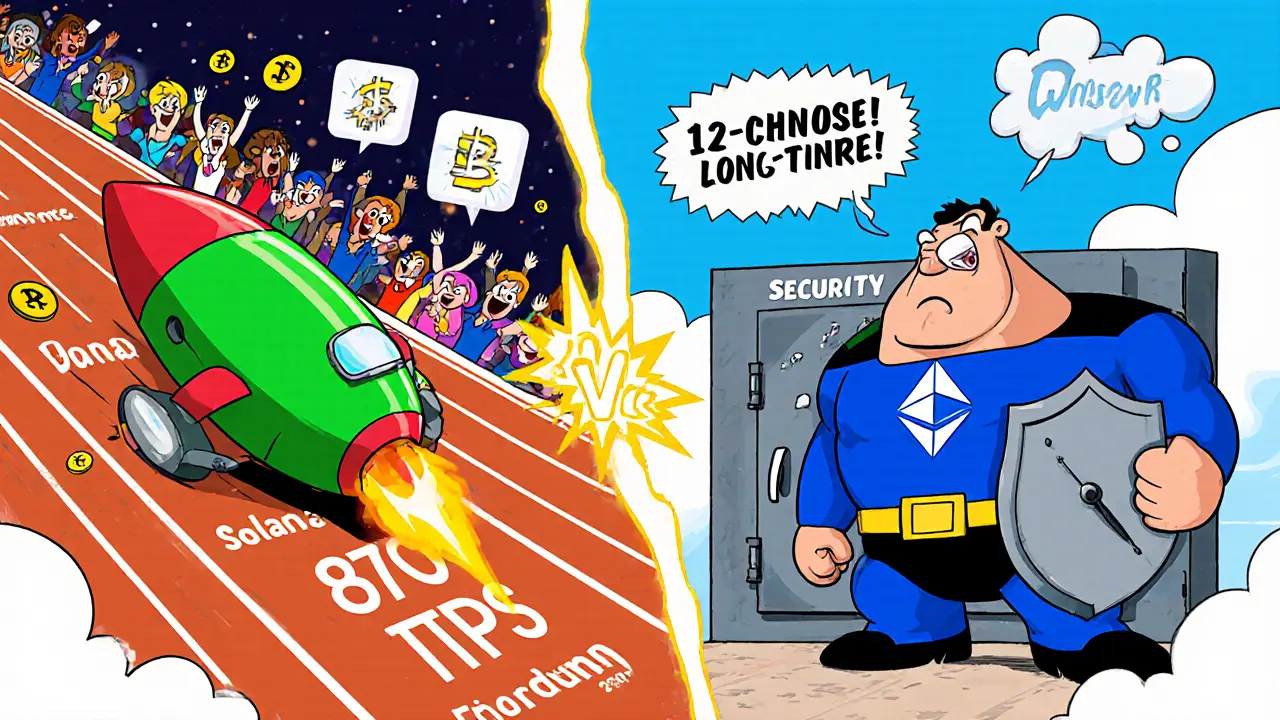TPS and Why It Matters for Every Crypto User
When talking about TPS, transactions per second, the metric that tells you how many moves a blockchain can settle in one second. Also known as transaction throughput, it directly decides if a network feels fast like Visa or sluggish like early Bitcoin. High TPS enables cheap swaps, instant game rewards, and smooth DeFi trades, while low TPS often means pricey gas fees and delayed confirmations.
One of the biggest challenges in crypto is blockchain scalability, the ability of a network to handle growing traffic without losing speed or security. Scalability is the umbrella that holds together consensus tweaks, hardware upgrades, and protocol redesigns. Without it, a chain stuck at 7‑15 TPS can’t compete with traditional payment rails that push thousands of transactions per second.
Enter layer 2 solutions, off‑chain or side‑chain technologies that bundle many transactions before settling them on the main chain. Layer 2 is the shortcut that lets a network keep its security while boosting throughput. Think of it like a carpool lane: many people share the ride, reducing congestion on the main road.
These three pieces – TPS, scalability, and layer‑2 – form a chain of cause and effect. TPS measures network speed; scalability provides the roadmap to increase that speed; and layer‑2 solutions implement the roadmap in practice. When you combine them, you get the high‑throughput blockchains that power real‑time gaming, decentralized exchanges, and NFT marketplaces.
How Consensus Mechanisms Influence TPS
Consensus is the engine that powers TPS. Proof‑of‑Work (PoW) like Bitcoin’s consumes time solving puzzles, capping TPS at around 7. Proof‑of‑Stake (PoS) swaps hashing for voting, usually raising the ceiling to dozens or hundreds of TPS. Some newer chains adopt Byzantine Fault Tolerance (BFT) variants that can push throughput into the thousands. The choice of consensus directly dictates the baseline TPS a blockchain can achieve before any upgrades.
For developers and investors, knowing a chain’s consensus helps set realistic expectations. If a project promises 10,000 TPS on a PoW base, the numbers are likely inflated. Conversely, projects built on Tendermint BFT or Avalanche’s Snowman consensus often deliver the high numbers they advertise.
But consensus isn’t the only lever. Network architecture, block size, and block time all affect the final TPS figure. Larger blocks hold more transactions, while shorter block times reduce latency. Balancing these variables without sacrificing security is the art of protocol design.
Sharding and Parallel Processing
Another scalability tool is sharding – splitting a blockchain’s state into independent pieces called shards. Each shard processes its own set of transactions in parallel, effectively multiplying TPS. Ethereum 2.0’s roadmap relies heavily on sharding to reach tens of thousands of TPS.
Sharding brings new challenges: cross‑shard communication and data availability. Solutions like asynchronous cross‑shard messaging and validator rotations aim to keep the system secure while preserving speed. When sharding works, it turns a single‑threaded chain into a multi‑core processor.
Real‑World Impact of High TPS
High TPS isn’t just a bragging right; it translates into user experience. In DeFi, a low‑TPS environment can cause slippage and failed trades during market spikes. In gaming, players expect instant reward claims – a 2‑second confirmation feels laggy compared to a 0.2‑second instant.
Enterprises looking at blockchain for supply‑chain tracking also care about TPS. When a network can log thousands of sensor updates per second, it becomes a viable alternative to legacy databases. That’s why many corporate pilots pick high‑throughput chains like Solana, Aptos, or Near.
Measuring TPS Accurately
Not all TPS numbers are created equal. Some projects quote “theoretical max TPS” based on ideal conditions, while others share “real‑world average TPS” from live data. For accurate comparison, look for metrics that include transaction size, network load, and fee structure.
Tools like block explorers and analytics dashboards provide live TPS charts. Watching those graphs during peak usage (e.g., NFT drops or major token launches) reveals how a chain copes under stress. Consistent performance at high load is the true test of scalability.
What to Expect in the Articles Below
The posts stacked under this tag walk you through the whole ecosystem. You’ll find deep dives into specific high‑throughput tokens like Wrapped Harmony (WONE), breakdowns of evolving block reward models that affect miner incentives and TPS, and practical guides on navigating regulations that can impact network adoption. There are also reviews of decentralized exchanges that rely on fast settlement, such as Switcheo Network and Uniswap v2 on Base, showing how layer‑2 integrations boost trading speed.
Whether you’re a trader chasing low‑fee swaps, a developer building a game that needs instant payouts, or just curious about how blockchain can keep up with real‑world demand, the collection gives you actionable insights. Dive in and see how each piece – from consensus tweaks to sharding to layer‑2 rollups – contributes to the ultimate goal: a blockchain that can handle the traffic of tomorrow, today.








Categories